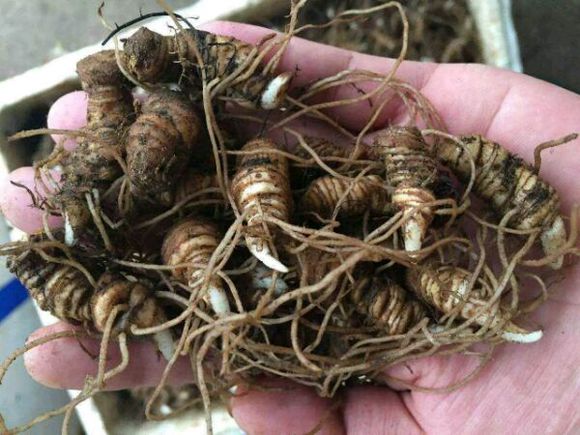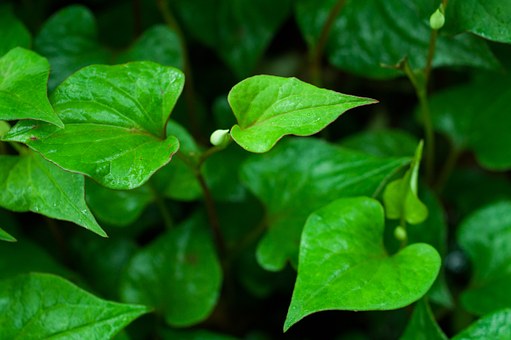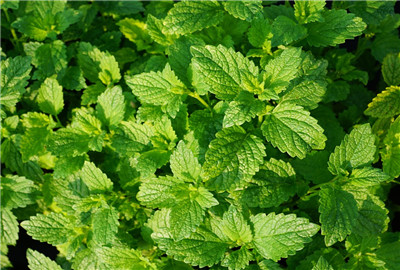What are the effects of seven leaves and a flower? How to plant it?
Seven leaves and one flower is a plant of the genus Liliaceae. Alias flea Xiu, Chixiu, Chongtai Root, whole Xiu, Caohe car, Chongtai Grass, White Gansui, Golden Line, Trichosanthes, nine hoops, mandarin duck worm, branch flower head, screw seven, conch seven, lampstand seven, Baihe car, Luotuo Panax notoginseng, soil Panax notoginseng, also known as seven leaf lotus. Its characteristic is that a flower emerges from a circle of whorled leaves, the shape of the flower is very similar to its leaves, it can be divided into two parts, the outer whorl and the inner whorl are very similar, there are about 6, and the inner whorl has about 8. The leaf sequence of one flower with seven leaves belongs to whorls, and the number of leaves varies from 4 to 14. "Seven leaves" is just a name. The structure of the flower is special: the center of the leaf, such as a wheel, will bloom, the calyx is green, and the petals are ribbon-shaped. In the early days of Taiwan, it was used to treat symptoms such as snake venom and sores.

[efficacy] detoxification and anti-cancer, clearing heat and detoxification, reducing swelling and pain, clearing heat and relieving shock, relieving cough and asthma.
[indications] it is one of the main components of Yunnan Baiyao to treat carbuncle, tuberculosis, chronic cough, injury, snakeworm bite, lymphoid tuberculosis, osteomyelitis and so on.
[planting] seed planting is the main method, and rhizome planting can also be used.
1. Seed planting.
It is best to use direct seeding, but in order to save seeds and high yield, we can use seeds to raise seedlings and transplant.
Live on ⑴. After soaking rain in mid and late May, hit a small shallow pond with a row spacing of 30ml / 35cm, a plant spacing of 20cm / 25cm, a small shallow pond 5cm deep, a narrow moisture of 130cm in 4 rows, and a wide soil moisture of 150cm in 5 rows. Soak the seeds in cold water for 24 hours before sowing, sow them with plant ash, plant 3 seeds in each pond. After sowing, cover the fertile soil with fine dung and half of the fine soil, 2Mel 3cm. The dry soil should be watered in time, and the seedlings will germinate in 10 days.
The seedlings were raised and transplanted with ⑵. This is an important measure to save seeds and strive for festivals. Choose the seedbed in the dry land or vegetable garden with water in early April. Before digging the land, it is best to use 40% pentachloronitrobenzene, 5 grams of fine soil per square meter, to carry out soil disinfection, and then repeatedly dig the topsoil layer, flatten the soil surface, open a sowing ditch with a depth of about 5 centimeters on the soil surface, sow seeds in the ditch with a spacing of 5 centimeters, then cover 3 centimeters of soil, cover 2 centimeters of fine dung, water thoroughly and cover the plastic film, and the seedlings can emerge in 7 days. After raising seedlings for one month, the seedlings were transplanted to the field according to the specifications of direct seeding.
2. Rhizome planting.
In autumn and winter, the sturdy, disease-and pest-free rhizome was stored in a cool and dry place, and it was taken out in the first and middle of April of the following year. According to the characteristics of bud remnant stem and bud mark, it was cut into small segments, each section was guaranteed to take 1 bud mark, after being properly dried and mixed with plant ash, it was planted in the seedling bed like sowing and covered with film. After taking root and sprouting for 20 days, it was transplanted to the field according to the direct seeding specification in the middle and late May. In the middle and last ten days of May, the seedlings of the direct seeding site were carried out, and the ponds were checked to fill the gap at the same time. Before the seedlings should be watered, the seedlings should be pried with wooden sticks, and the root water should be watered when replenishing the seedlings, so as to make full use of the seedlings to ensure the whole seedling and sufficient density. From late May to early June, there are many torrential rains and the soil is easy to harden, so it is necessary to drain and prevent waterlogging in time, plough the soil frequently, loosen the soil shallowly, and pay attention to the removal of weeds at any time.
3. Shade
A flower with seven leaves likes shade and is afraid of strong light, and the transmittance is 40% and 50% during the whole growth period. Therefore, shading measures should be taken after emergence and transplanting. Where there are conditions, it is best to use a sunshade net; where there are no conditions, we can take the method of planting branches for shading, and we can also see the interplanting of corn and other tall stalk crops between rows, but we should pay attention to density and interplanting.
4. Cultivate the soil
A flower with seven leaves usually blossoms at the top and expands at the bottom of the tuber, which is the fastest in mid-June and late June to August. Must be in the first ten days of June re-application of topdressing, per mu with mature farm manure 2000,000kg, plus calcium 20ml 30kg, after the root combined with ditch cleaning soil, the soil must be loose, to maintain moisture surface, no water at the bottom of the ditch.
5. Pest control
The insect pest has not been found in one flower of seven leaves, which is related to its mild toxicity. However, in case of low temperature and rainy weather or high temperature and high humidity weather, the disease is more likely to occur and should be prevented and treated as soon as possible.
1. Rhizoctonia solani: the disease is a seedling disease, which is serious in low temperature and rainy days from April to May. At the initial stage of the disease, yellow-brown water-stained disease spots appear at the base of the seedling stem, and spread around the base, causing the seedlings to wither, and in serious cases, the seedlings die and fall.
Prevention and treatment methods: strengthen field management, carry out soil disinfection, remove diseased seedlings after the disease, disinfect the seedling bed with medicine, and spray Dysen zinc solution.
2. Sclerotinia sclerotiorum: the disease is seriously harmful, which occurs when the rain is high and humid in May every year, harming the base, first showing soft rot, then white filaments in the diseased part, and then the pathogenic sclerotia with dark brown particles around the diseased part, and finally the whole plant dies and lodges.
Prevention and control methods:
①. Clear the ditch and drain in time to reduce the humidity in the field.
②. Remove the diseased plant in time and spread lime in the disease center.
③. Spray thiophanate or propranolol for 2 or 3 times, and spray chlorothalonil in severe cases.
3. Black spot: the disease starts from the leaf tip or leaf base, producing round or subcircular spots, and sometimes the disease spreads to the flower axis, resulting in leaf blight and stem blight.
Prevention and control measures:
① should pay attention to drainage and dehumidification, reduce air humidity and reduce the incidence of the disease.
5% bacteriological detergent or 50% methyl thiophanate suspension was sprayed at the initial stage of the onset of ②.
4. Stem rot: this disease mostly occurs in the seedbed stage, and the harm is more serious in the high temperature and rainy field stage. First of all, the yellow-brown disease spot is produced at the base of the stem. after the disease spot is enlarged, the leaf tip loses its drooping under water, and when it is serious, the stem base falls down with wet rot.
Prevention and control measures:
① and rotation of Gramineae crops for more than 3 years
50% carbendazim wettable powder was sprayed on the seedling bed of ② before transplanting as a "marriage medicine"
③ attenuated vaccine
At the initial stage of the disease in ④ field, 95% dimethazone wettable powder was used to irrigate the pond, once every 10 days, and 2 Mel was irrigated continuously for 3 times.
5. Beetles: the leaves are harmed by adults and the roots are eaten by larvae (Bombyx mori), which affects the growth of heavy buildings.
Prevention and control measures:
At night, torches are used to trap and kill adults, and trichlorfon is sprayed with fresh vegetable leaves to trap and kill larvae.
Harvesting and processing:
The tubers cultivated for 5 years were harvested for medicine, and the tubers were harvested for medicine 3 years later. It can be harvested before and after falling seedlings in autumn, that is, from November to December to March of the following year. Most of the heavy building tubers grow in the topsoil layer and are easy to dig, but attention should be paid to keeping the tubers intact. First cut off the stems and leaves, then dig from the side with a hoe, dig out the tubers, shake off the soil, wash them with clean water, and then slice them into fresh slices, 2mm thick and dry in the sun. On cloudy days, it can be dried over a low heat of about 30 ℃.
Time: 2019-04-12 Click:
- Prev

How does Houttuynia work? How to grow? (Food recipe included)
Houttuynia (herb), also known as the root of broken ears, Cen grass,[j], purple, wild wheat and so on. It is the dry aquatic part of a perennial herb of Saururus family. Found in provinces south of the Yangtze River basin in China. Summer stems and leaves flourish, flowers and spikes are harvested at many times, washed
- Next

How to grow potted mint at home? What do you need to pay attention to?
Peppermint, soil called Yindancao, is a kind of aromatic crop with special economic value. Many people like to put a few pots at home, so how to grow potted mint at home? What do you need to pay attention to? Next, let's learn about the planting methods of potted mint. Mint growth environment requirements.
Related
- Fuxing push coffee new agricultural production and marketing class: lack of small-scale processing plants
- Jujube rice field leisure farm deep ploughing Yilan for five years to create a space for organic food and play
- Nongyu Farm-A trial of organic papaya for brave women with advanced technology
- Four points for attention in the prevention and control of diseases and insect pests of edible fungi
- How to add nutrient solution to Edible Fungi
- Is there any good way to control edible fungus mites?
- Open Inoculation Technology of Edible Fungi
- Is there any clever way to use fertilizer for edible fungus in winter?
- What agents are used to kill the pathogens of edible fungi in the mushroom shed?
- Rapid drying of Edible Fungi

